Growing family with limited bedrooms? Solve room sharing challenges and make room sharing fun with these creative inspirational ideas below:

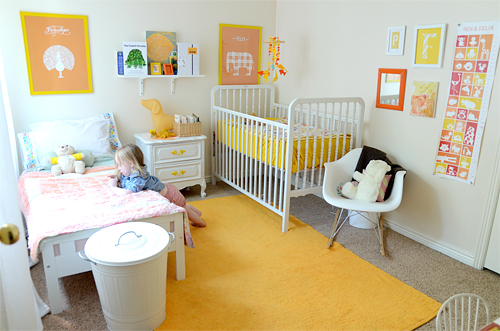








Growing family with limited bedrooms? Solve room sharing challenges and make room sharing fun with these creative inspirational ideas below:









 At around 4-6 months, most babies get their first tooth. Baby teeth preserve the spacing for future permanent teeth and are necessary for a baby to chew & speak. For those reasons, it’s important to start cleaning your baby’s teeth as soon as that first tooth sprouts.
At around 4-6 months, most babies get their first tooth. Baby teeth preserve the spacing for future permanent teeth and are necessary for a baby to chew & speak. For those reasons, it’s important to start cleaning your baby’s teeth as soon as that first tooth sprouts.
 Caring for Your Baby’s Teeth:
Caring for Your Baby’s Teeth:
Simply wrap a wet washcloth or moistened gauze around your index finger and rub it gently over your baby’s tooth and gums, wiping away plaque. You don’t need to use any toothpaste yet. Getting your baby used to having his mouth cleaned as part of his daily routine should make it easier to transition into tooth brushing later on.
Once your baby has several teeth, you can begin using a baby toothbrush and tiny amount of toothpaste. Avoid using fluoride toothpaste at least until the child is 2 years old. Fluoride can be toxic to children if ingested in large quantities. Brush gently, getting the inside and outside of each tooth, brush the tongue as well, to dislodge bacteria that can cause bad breath.
Depending on the child, you may not manage to brush much at first, but keep trying. The important thing is to get your baby used to teeth-brushing as part of their daily routine. Set good examples by letting them see you brushing your own teeth.
Party time! My daughter’s first birthday is just around the corner, an awesome excuse to finally upcycle all the baby food jars I’ve been collecting. Being creative and thinking outside the box, I re-purposed the jars for party favors. See Below:
Simple Instructions: fill jar with selected candy, wrap jar lid with cupcake paper baking cup, screw lid onto jar, wrap jar with ribbon.
Simple Instructions: fill jar with selected candy, screw lid onto jar, cover lid with cupcake paper baking cup, tie ribbon around the paper baking cup in the groove just below the lid.
Simple Instructions: fill jar with selected candy, wrap lid with cupcake paper baking cup, screw lid onto jar, tie ribbon around the jar in groove just below the lid.
 Reading together with your baby is the most important way to help her get ready to read. The more words your baby is exposed to, the better she’ll be able to talk and eventually start reading on her own. Babies can pick up the rhythm and tones of your voice; reading to babies is a great way to engage them in the sounds and rhythms of speech, which is crucial for language development.
Reading together with your baby is the most important way to help her get ready to read. The more words your baby is exposed to, the better she’ll be able to talk and eventually start reading on her own. Babies can pick up the rhythm and tones of your voice; reading to babies is a great way to engage them in the sounds and rhythms of speech, which is crucial for language development.
Below are 7 reasons why reading to your baby is beneficial:
1. Promotes listening skills
2. Increases the number of vocabulary words babies hear
3. Develops attention span and memory
4. Helps babies learn to understand the meanings of words
5. Promotes bonding between baby and parent
6. Stimulates the imagination
7. Instills the love of books and learning
 Get your baby hooked on books while building her language skills. Develop a daily interactive reading routine with your baby and she will naturally associate books with fun.
Get your baby hooked on books while building her language skills. Develop a daily interactive reading routine with your baby and she will naturally associate books with fun.
Below is a list of my personal favorite children books, perhaps you can enjoy them with your little one as well.
 Eating healthy doesn’t allows mean breaking the bank. It’s true that health food restaurants and grocery stores are pricier; nevertheless, there are still ways to get around spending lots of money while maintaining a healthy diet.
Eating healthy doesn’t allows mean breaking the bank. It’s true that health food restaurants and grocery stores are pricier; nevertheless, there are still ways to get around spending lots of money while maintaining a healthy diet.
Below is a list of simple ways to eat healthy on a budget:
Buy in Season fruits and vegetables. Fruits and vegetables sold out of season are more expensive than those sold in season. Learn which foods match with the season to save a few bucks, (Seasonal produce guide: http://whole9life.com/wp-content/uploads/2010/12/whole9-produce-guide.pdf) Buying in season also means fresher, more delicious and nutrient-dense produce.
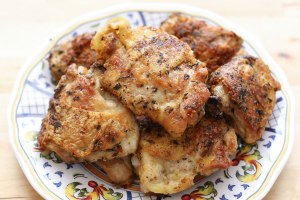 Buy Discounted Meat. Keep a watchful eye as grocery stores often discount meats by up to 70% as they approach expiration date. Also try looking for less expensive cuts of meat, for instance chicken thighs instead of chicken breasts.
Buy Discounted Meat. Keep a watchful eye as grocery stores often discount meats by up to 70% as they approach expiration date. Also try looking for less expensive cuts of meat, for instance chicken thighs instead of chicken breasts.
Buy from Local Framers Markets. Neighborhood farmers markets supply cheaper and at often times locally grown produce.
Buy frozen and stock up. Frozen produce can be cheaper, yet still as beneficial as fresh produce. It is generally picked at its peak of ripeness and frozen immediately after a process called blanching, where the product is cooked briefly in boiling water to sterilize. Frozen produce is also a great convenience for soups, shakes, stews and side dishes.
Organic Coupons. Save on organic and natural items by clipping coupons. (Free organic coupons: http://www.organicdeals.com/) Stock up on favorite items when they go on sale.
Organic Must Haves – Realistically, buying everything organic can become costly. Pick and choose what you buy organic by becoming familiar with the Dirty Dozen, foods you should always buy organic due to high levels of pesticides, and the Clean 15, the least contaminated foods with few or no contaminants. Here is a list of the Dirty Dozen and Clean 15:
Dirty Dozen
Clean 15
Avoid Impulse Buying. Budget by making a grocery list prior to grocery shopping. Buy organic items that are lower in price (such as produce), and make your own dishes from scratch.
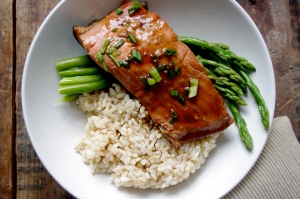 Home Cooked Meals. Cut expenses by thinking ahead. If you know you’ll be stuck late at work tomorrow, prep dinner ingredients for a home cooked meal, you’ll be far less tempted to spend on fast food and eating out.
Home Cooked Meals. Cut expenses by thinking ahead. If you know you’ll be stuck late at work tomorrow, prep dinner ingredients for a home cooked meal, you’ll be far less tempted to spend on fast food and eating out.
Grow a Vegetable Garden. Grow your own vegetable garden and save on foods such as tomatoes, cucumbers, peppers, herbs, etc. (A vegetable garden how to guide) http://www.fruitsandveggiesmorematters.org/starting-your-vegetable-garden
~Valene Warren~
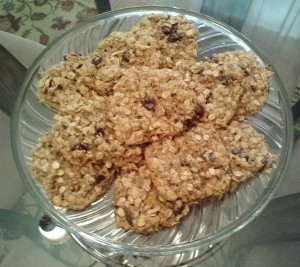 Nursing Mama? Boost your milk supply with this yummy, easy to make, lactation cookie recipe.
Nursing Mama? Boost your milk supply with this yummy, easy to make, lactation cookie recipe.
INGREDIENTS:
• 1/2 cup brown sugar
• 1/2 cup pure cane sugar
• 1 cup flour
• 1/2 tsp. baking soda
• 1/2 tsp. baking powder
• 1/2 cup semi-sweet chocolate chips
• 1/2 cup shredded coconut
• 1-1/2 cup rolled oats (lactogenic)
• 2 tbsp. flaxseed meal (lactogenic)
• 1 tbsp. Brewer’s yeast (lactogenic)
• 1 egg
• ½ cup melted butter
• 1 tsp. vanilla
Instructions: Preheat oven to 350 degrees. Combine dry ingredients into large bowl. In a small bowl, combine 1/2 cup melted butter (cooled), 1 egg and 1 tsp. vanilla. Add butter mixture to the large bowl of dry ingredients, mix well. Roll dough mixture into tbsp. balls, place on greased cookie sheet. Bake for 10-12 minutes.
Develop thinking skills, motor skills, and individual play with sensory activities.
1. Explore textures and prints with a variety of textured fabrics.
2. Treasure Basket – fill basket with safe non-toxic interesting objects for baby to explore.
3. Play Mat – Enjoy tummy time with a Play Mat. baby can roll, push up & explore.
4. Cardboard Box Play Tunnel – simply turn a large cardboard box onto its side and create a crawl-through
5. Sensory Bottles – no-mess sensory play
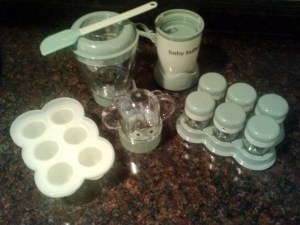 Over the weekend I bought a baby bullet food system, used to make and store homemade baby foods. I’ve been eyeing it for a while; I was so excited to finally take it home.
Over the weekend I bought a baby bullet food system, used to make and store homemade baby foods. I’ve been eyeing it for a while; I was so excited to finally take it home.
I love to cook; it was no surprise to my husband that I would introduce solid foods to our baby girl with homemade purees. Unlike pre-packaged baby foods I know exactly what I am feeding my baby, it’s more economical, and paves the way to healthy eating.
For an introduction to solids, I stuck to single ingredient purees from fruits and vegetables.
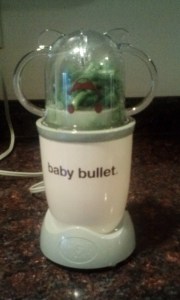 Mindful of possibly killing nutrients and vitamins by over cooking, I steamed the vegetables. Next, chopped all food items into bite size chunks, added ¼ cup of water to each single ingredient, and then blended each food item into a puree. Once I made the purees, I stored them, popped a few in the refrigerator, and the remaining balance into the freezer. Refrigerated purees last for about 3 days, frozen 30 days.
Mindful of possibly killing nutrients and vitamins by over cooking, I steamed the vegetables. Next, chopped all food items into bite size chunks, added ¼ cup of water to each single ingredient, and then blended each food item into a puree. Once I made the purees, I stored them, popped a few in the refrigerator, and the remaining balance into the freezer. Refrigerated purees last for about 3 days, frozen 30 days.
Refrigerated Purees
Frozen purees
~Valene Warren~